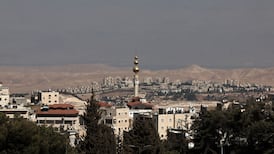A young couple hold hands as they take a night-time stroll along a Tehran street in a public display of affection, passing a polling station they had no intention of entering on election day. A hotel worker openly tells a foreigner that he has not voted in an election since a brutal crackdown on pro-democracy protesters 12 years ago because it is a pointless exercise.
In an upmarket restaurant, women, hijabs draped around their shoulders when they are supposed to be covering their heads, draw on cigarettes through manicured fingernails as they chat above western music.
In their own ways, each represents an act of defiance against the austere Islamic system that they, and more than half of Iran's 85 million population, were born into. It is a trend rippling through Iranian society that reached a new peak on June 18th, when more than half the republic's voters ignored the pleas of Ayatollah Ali Khamenei and boycotted presidential elections.
In a rare act of civil disobedience, Iranians delivered the lowest turnout, 48.8 per cent, at a presidential poll since the 1979 Islamic revolution. About 3.7 million of those who did enter polling stations spoiled their ballots. Rather than the popular legitimacy the supreme leader craves for his theocratic regime, the public delivered a snub.
It came at a crucial moment. This is a period that is expected to define Khamenei’s legacy and determine whether the 82-year-old can narrow the gulf between the regime’s ideology and the aspirations of the country’s youthful population and shape the next chapter of the Islamic republic.
"We need to get prepared for the post-Khamenei period," says a hardliner, who campaigned for Ebrahim Raisi, the incoming president.
Much will rest on Raisi’s shoulders, Khamenei’s favoured candidate in the election and a potential successor who the supreme leader hopes can bring order to a fractious system, conservatives and regime insiders say.
Peaceful transition
A relative of Khamenei says the cleric who has led Iran for 32 years is determined to secure the republic's future and ensure a peaceful transition after his death, adding that the low turnout is only likely to accelerate the need for changes, including potential amendments to the constitution.
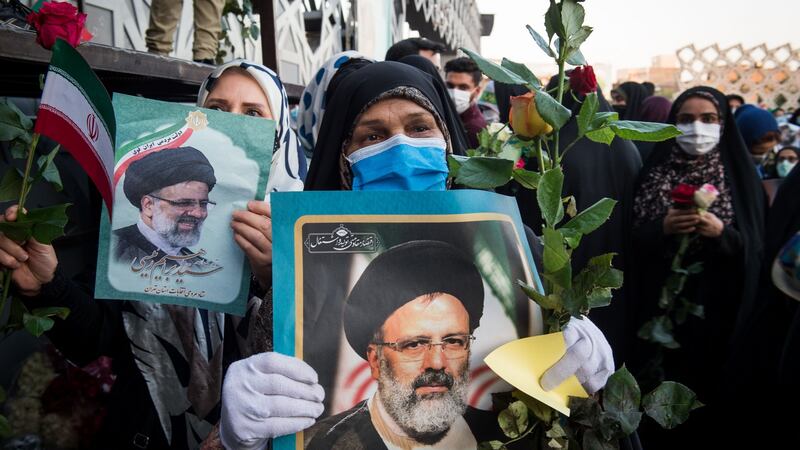
If the schism between the people and their leaders continues to widen and a deep economic malaise goes unfixed, the risk is that the protests move from the ballot box back to the street. It is a threat that raises the leaders’ biggest fear: an explosion of social unrest akin to that which ousted the last shah and brought the clerics to power in 1979.
“People are angry and hurt. You cannot have a spark in a barrel of explosives,” Khamenei’s relative says. “The system has taken this election signal very seriously. It will take steps to address the political and economic problems and will give more social and political freedoms to ease the pressure on people.”
It is a narrative that fits with the softer image Raisi, a conservative cleric, has attempted to portray, seemingly intent on dispelling the perception of a stern judiciary chief who is alleged to have overseen the execution of thousands of political prisoners in the turbulent 1980s.
The message conservatives appear keen to deliver is that the clerical leadership has recognised that changes are seeping through society and grudgingly accepts they can no longer dictate Iranians’ behaviour.
But others fear that hardliners, now at their most powerful in almost a decade, will use Raisi’s victory to crush dissent, ushering in the next bleak chapter for reformists as they are pushed ever further into the political wilderness.
“Reformist politicians will be curbed . . . which means restrictions will continue or get even more intense,” says Saeed Laylaz, a reformist analyst. “In Iran, Bonapartism [a strong leader] will eventually rule to create stability . . . We are moving in that direction now.”
Analysts say there will be no changes to Iran’s muscular foreign policy, including its support of militant groups across the region and the expansion of its missile programme. Nor do they expect any rolling back of the feared internal security apparatus. Raisi has said his government will continue talks with world powers to revive the 2015 nuclear deal, but he has already indicated he will take a tougher line. Analysts say the lifting of US sanctions and the easing of economic pressure on the republic will be critical to the success of his presidency as he inherits a battered economy.
Yet, Laylaz and others predict that hardliners will ultimately open up Iran culturally, socially and economically to lure middle class voters in an effort to extend their reign in a country where a tech-savvy, urbanised and better informed population will continue to test which social boundaries can be breached.
“This is a society that is going to be raising its demands all the time and suppressing it will be very difficult. There’s a new generation that doesn’t believe in us any more,” says Mohammad Ali Abtahi, a reformist former vice-president. “They want reform on the scale of international standards and they are acting on it.”
Preserving the system
Throughout the republic’s history, Iran’s Shia leaders have resorted to pragmatism to counter internal and external threats and maintain their grip on power. At the height of the 1980s Iran-Iraq war, Ayatollah Ruhollah Khomeini, the cleric who spearheaded the Islamic revolution, told his countrymen that the regime’s survival came before prayer and fasting.
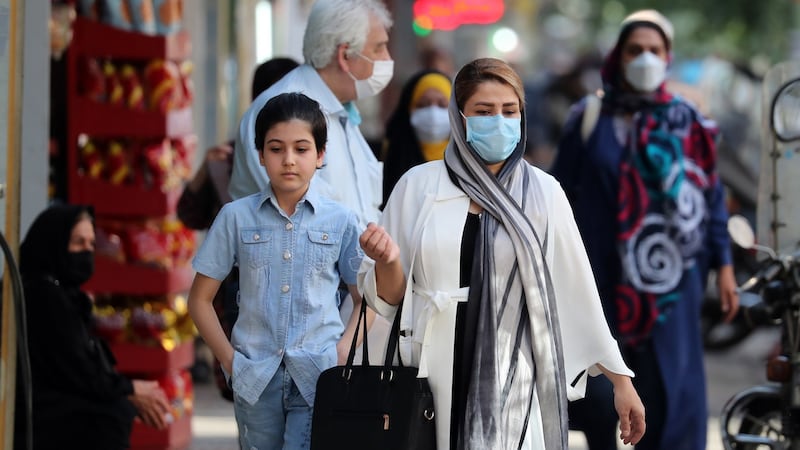
In a subtle, more contemporary way, conservative candidates deployed similar tactics during TV debates ahead of the election. While one hardliner promised to include two women and two Sunni Muslims in his cabinet and to bring “structural changes” to the system, Raisi boasted that he had opened a women-only park in the religious city of Mashhad. He also criticised his centrist predecessor, Hassan Rouhani, for not doing more as president to defend women’s rights and failing to appoint female ministers.
The reformists’ greatest success, Abtahi says, has been to narrow the distinction between the language of his ilk and hardliners to such a degree that the latter now utter things that the former would not have dared raise 10 years ago.
“When they look at their own families, their children and their grandchildren, like the rest of society they spend all their time on smartphones,” he says. “When there’s a choice between the survival of ideology and the survival of the political system, they sacrifice the ideology.”
Preservation of the system is considered the ultimate goal of both reformist and hardline politicians. Where they differ is on what needs to be done. The former believe there is no choice but to open up to keep pace with an evolving society and a changing world.
Conservatives, however, typically eschew thawing relations with the West, look inward for answers and trumpet the regime’s success in becoming a regional military power, with its allies and proxies dominant in Iraq, Lebanon, Syria and Yemen. They argue that any failures are the result of decades of western sanctions and poor implementation caused by conflicts within the system, rather than ideology.
“The opposing power centres have made the government very inefficient and it has not been able to meet its promises because they have obstructed each other,” says Mohammad Mohajeri, a conservative commentator.
1979 revolution
Iranian analysts trace the tensions to the unique political system Khomeini established after the 1979 revolution, with the supreme leader at the pinnacle of power atop a directly elected president and parliament.
In between sits the elite Revolutionary Guards, the republic’s most powerful institution and an ideological force that is unwaveringly loyal to the supreme leader; the elderly, ultraconservative senior clergy; and the judiciary, are also bastions of hardliners.
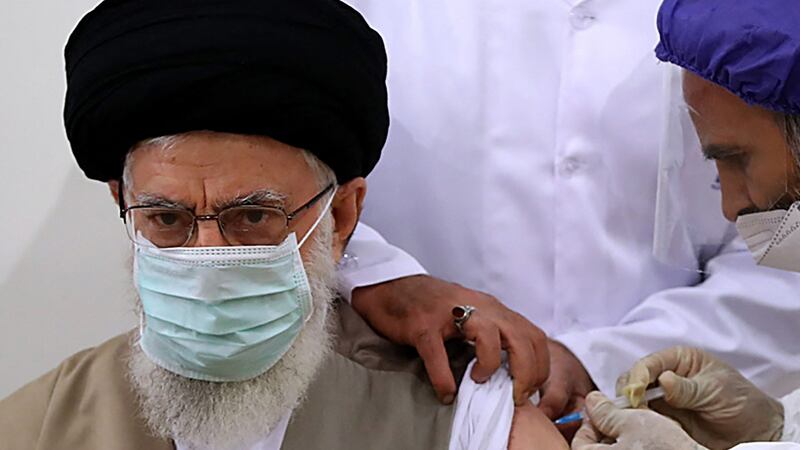
Conservatives also dominate other key institutions, including the Guardian Council, which, with half of its 12 members appointed by the supreme leader, approves or vetoes legislative bills, and the Assembly of Experts, which will determine who succeeds Khamenei.
It is a structure that ensures that the supreme leader has ultimate power across all spheres of policy, with hardliners also in control of state tools deployed to keep the population in line: the security apparatus and the judiciary.
Yet despite their power and the autocratic nature of the regime, elections have produced unpredictable outcomes that exposed cracks in the system. As a result, the hopes of many Iranians have been raised when pro-reform politicians fill the presidency and parliament, only to be dashed by broken promises when hardliners strike back.
The two terms of Mohammad Khatami, Iran's only reformist president, from 1997-2005, ushered in an era that many Iranians refer to as a "Golden Age". But his presidency was followed by that of the populist hardliner Mahmoud Ahmadinejad, and a brutal crackdown on pro-democracy protesters amid claims that the 2009 election was stolen.
Rouhani stoked another period of cautious optimism as he pledged to leverage the 2015 nuclear accord Iran signed with world powers to open up the country and re-engage with the west. But the decision of Donald Trump, the then US president, to abandon the deal in 2018 and impose swingeing sanctions on the republic shattered those expectations. His actions devastated the economy and helped fuel the sense of hopelessness that caused some 30 million voters to stay home on election day.
Rival camps
Each of those presidencies was marred by power struggles between rival camps. Now, Khamenei appears determined to put that to an end with Raisi, whose path to the presidency was cleared after the Guardian Council barred leading reformists, and a credible conservative rival, from contesting the poll.
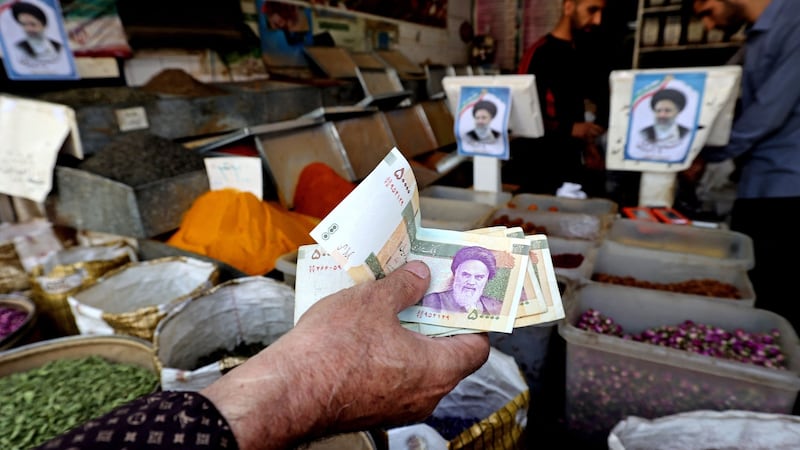
Khamenei’s relative says potential changes to the constitution, including moving to a parliamentary system under which a prime minister is elected by MPs to replace the presidency, is being discussed as an idea to generate more consensual government. Iranian commentators have also publicly raised the possibility on social media.
However, another regime insider insists constitutional change is not up for debate. He argues that “there is a kind of balance maturing between the government and the people”.
“People have somehow come to an agreement: you cover yourself with the chador [full body cloak for women], or you cover yourself with a handkerchief; you play music and you drink in your home.”
Religion vs society
Yet the social gains of recent years, such as an unspoken relaxation of the strict wearing of hijab for women and wider access to the internet, fall miserably below the demands of many young Iranians.
“We have no hope in the future,” says Delaram, a 20-year-old student at Tehran University.
Of 12 girls in her extended family, she is the only one who remains in the republic, the others having sought new lives in the West. When her family and friends discussed whether to vote, the overriding message was “don’t dare”.
Delaram acknowledges that gradual changes over the past five years mean “we have reached a level of sort of freedom in the way we dress or behave . . . We learnt from the West and the government cannot roll it back,” she says, her hijab slipping to the back of her head. “We didn’t fight for it, it happened gradually.”
But she worries that Raisi and empowered hardliners will reverse even the modest changes. “The only thing that can happen with Raisi is that things get so bad something [unrest] happens,” she says.
On the opposite side of the ideological divide, Abbas Salimi Namin, director of a conservative research centre, offers a glimpse of the struggle those in favour of reforms face from an ideologically motivated core that helped Raisi secure 18 million votes.
Salimi Namin insists Raisi will narrow the gap between the state and its people, saying he’s “flexible” towards social and political freedoms. But he is adamant there should be red lines based on “religious principles”. Explaining his reasoning, he accuses “Zionists” and western capitalism of destroying the family institution “in the name of supporting women”.
“Maybe part of our society is impacted by the [western] propaganda,” he says. “Many young people like to experience new phenomena because they have not studied their past. But these experiences will not persist in the long run, and they will return to their own identity.”
Many Iranians view such sentiments as proof that conservatives are out of touch with reality. Khamenei’s relative blames a geriatric clergy for failing to deliver the core Islamic value – justice.
Yet women’s rights activist Faezeh Hashemi Rafsanjani says Iranians have lost faith in both reformists and hardliners. She likens the election to a referendum on the regime’s policies that produced a resounding “no” verdict.
‘Third way’
A daughter of Akbar Hashemi Rafsanjani, the late former president who shifted position from arch conservative to pragmatist, she believes the only path forward is a “third way”.
“What we can do now is civil disobedience, protests, but not in the streets, to achieve our rights,” she says. “For instance, when we talk about the hijab, if it is more relaxed, we are heading in that direction, if we see more women cycling in the streets.”
But when reformist politicians hear her thoughts, Hashemi says they ask: “‘Why are you saying these things? We [hardline and reformist politicians] are sitting in one boat and we will all drown together.’”
Such comments underline a perennial complaint of pro-democracy Iranians: reformers and hardliners are two halves of the same system and both put the regime’s interests before the people. But, in the absence of any credible opposition outside the system, many see no obvious alternative.
Delaram demonstrated with fellow students in December 2019 as mass protests erupted against a rise in fuel prices. But it was an unhappy experience. Fellow students were arrested and Delaram witnessed the might of the system they were up against.
“It showed we can’t make a difference whatever we do, they are more powerful than us. There is nobody who supports us when we protest,” says Delaram, whose father took part in the 1979 revolution while a student at Tehran University but now regrets it.
“Our problem is not religion,” adds Delaram. “The problem is we don’t want an Islamic state. People should choose how they live.” – Copyright The Financial Times Limited 2021



